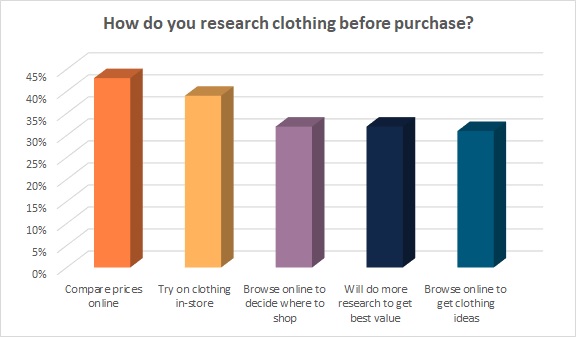Another holiday season is just about in the books and, of course, the retail industry is looking to suss out trends for 2024 before January hits. That’s always tricky, but maybe especially this time around. The retail industry is coming off a year where inflation and recession fears ruled the headlines, yet consumer spending remained strong through the third quarter and record numbers of shoppers turned out for the five-day Thanksgiving weekend, which led to a record start to the holiday season. Despite the inconsistencies, industry experts see trends emerging that smart retailers can jump on to make for a healthy New Year.
Reports from the Thanksgiving weekend stated shoppers responded to deep discounting. Denver-based mobile tech firm Ibotta says retailers need to prepare for consumers to engage in this kind of value-seeking year-round.
“Despite YoY store visits declining — a sign of inflation impacting purchasing power — shoppers are now visiting twice as many different stores as they were 10 years ago, and 54 percent say they would change stores to find savings,” Ibotta contends. “This trend of heightened value-seeking and channel shifting highlights a challenge: retaining the same percentage of a shopper’s basket is becoming increasingly difficult. For a key competitive advantage in 2024, retailers will need to deliver the savings that shoppers are looking for and expect to receive through personalized, targeted offers — on staples, new items and their favorites — helping to drive repeat trips, increasing traffic, basket sizes and easing the burden of prices rising over the last few years.”
The good news is shopper satisfaction has risen to 85 percent both in-store and online, according to a shopper study from Zebra Technologies. Its research finds shoppers are still aware of inflation and other economic challenges, but are leveraging their own devices and digital savvy to seek deals, check inventory, place delivery orders, and explore pickup options that meet their needs.
More than two-thirds of U.S. consumers (68 percent) place an importance on value, saying when they do buy clothing, they make an extra effort to be sure it is worth it, according to Cotton Incorporated’s 2023 Digital Innovations and Willingness to Pay Survey.
To get the best value when shopping for apparel, nearly one-third of U.S. consumers (32 percent) say they will do more research, according to Cotton Incorporated’s Inflation and Supply Chain Survey, Wave 6. That research entails comparing prices online (43 percent), trying on clothes in-store (39 percent), browsing online to decide where to shop (32 percent), and browsing online to get clothing ideas (31 percent), according to the 2023 Digital Innovations and Willingness to Pay Survey.

Algolia’s Piyush Patel, chief strategic business development officer at the digital search and discovery platform, says today’s consumers are truly rethinking how they approach shopping.
“Gone are the days of impulse-driven purchases,” Patel says. “Shoppers are becoming more strategic than ever. A huge reason for this shift is economic. Consumers are reaching the end of their pandemic-era savings, student loans are an issue once more and inflation really took a toll throughout 2023. The fact is, consumers are doing ample research on what they’d like to buy for themselves and loved ones, but they will sit on an idea, ensure it’s the right move and save up long before a product becomes a line on their credit card statement. Savvy retailers will need to continuously personalize great products, ads and offers to the casual shopper, so they’re the bug in their ear when Anna in Buffalo or Greg in St. Louis finally clicks ‘check out.’”
Patel says consumers will still shell out for products they feel are long-lasting and worth the money. And they might concede to buying a popular item that trends on social media.
“But for items that are clearly a quick trend (think summer’s resurgence of printed sweater polos) or more practical, everyday items, a purchase will likely come down to the cheapest item that pops up on their Amazon search,” Patel states. “This will be especially true in 2024 as consumers return to pragmatic shopping. Retailers should advertise and market affordable items accordingly.”
Synchrony’s Erica Sheffield, vice president of strategic research and insights communications for the consumer financial services company, says retailers need to be prepared for more bifurcation on the consumer side in 2024. She spoke during a recent CommerceNext webinar.
“While upper income consumers will have less of a struggle, we really are seeing increased pressure as lower credit consumers are coming closer to reaching their credit limits in 2024,” Sheffield said in the webinar. “That’s going to be a major challenge. As people do come close and there’s a lot less credit available for many, many consumers.”
Sheffield says her firm is monitoring the “record breaking use” of buy now/pay later.
“Shoppers used buy now/pay later for $940 million dollars’ worth of online purchases just on Cyber Monday alone,” Sheffield said. “That’s up 42 percent from last year. This frictionless payment method is really enabling a lot of extra purchases so it’s something we’re really carefully tracking.”
More than one-third of holiday shoppers say they plan to use store financing, layaway, or buy now/pay later options to buy holiday gifts this year, according to the 2023 Cotton Incorporated Lifestyle Monitor™ Survey.
Whether consumers are looking for a deal or a unique gift for a hard-to-please recipient, some analysts feel generative AI will be the resource that can best help retailers in the future. Funnel’s Sean Dougherty, copywriter at the marketing analytics software firm, says the benefits of generative AI include the ability to create hyper-personalized content for consumers. Among other things, AI will help brands deliver ads at the best time for each shopper, use predictive analytics to upsell or cross-sell, and analyze customer data and behavior to forecast the potential lifetime value of a customer to a business.
“With AI-powered tools, marketers can easily analyze and derive insights from large datasets without needing specialized technical skills,” Dougherty states. “This allows them to make data-driven decisions in real-time, leading to better campaign outcomes and customer experiences.”
